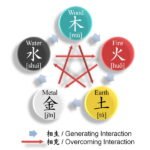Introduction to the Japanese Occupation
The Japanese occupation of Korea, spanning from 1910 to 1945, was a critical period that shaped the course of Korean history. During this time, Japan sought to expand its influence and secure its position as a formidable power in East Asia. Driven by imperial ambitions, Japan aimed to exploit Korea’s resources, both human and material, while simultaneously suppressing Korean identity and culture. This occupation marked an era characterized by harsh administration, economic exploitation, and cultural assimilation policies, which had profound implications for Korean society.
Initially, the Korean response to Japanese rule ranged from passive acceptance to active resistance. Many Koreans hoped that Japanese governance might lead to modernization and development. However, as the realities of occupation unfolded, disillusionment grew rapidly among the populace. The Japanese imperial government implemented systematic measures that suppressed the Korean language, imposed Japanese names, and marginalized Korean traditions. Resistance movements emerged in response, reflecting a deepening discontent with the exploitative practices of the Japanese regime.
The impact of the occupation on the Korean economy was particularly significant, as Japan redirected resources for its military and industrial purposes. Agricultural lands were seized, forcing many Koreans into tenant farming or urban labor. The working class faced harsh conditions, and the existing social hierarchies were often disrupted. Culturally, the suppression of Korean identity led to a fierce desire for preservation and revival among various sectors of society, including artists, intellectuals, and everyday citizens, contributing to a burgeoning independence movement.
Understanding the context and consequences of the Japanese occupation of Korea is essential for comprehending the subsequent struggles that unfolded, including the tumultuous path toward independence and the eventual Korean War. This period laid the groundwork for a resilient national identity and a collective memory that continues to influence Korea today.
Impact of Japanese Rule on Korea
The Japanese occupation of Korea, lasting from 1910 to 1945, profoundly affected the social, political, and economic landscape of the Korean Peninsula. The colonial government imposed a series of changes aimed at eradicating Korean identity and culture, which had lasting repercussions on the nation’s psyche and its quest for independence.
One of the most significant impacts was the suppression of Korean culture. The Japanese authorities sought to assimilate Koreans, mandating the use of the Japanese language in schools and public offices. Korean history was often rewritten to glorify Japan and diminish the Korean narrative, leading to a loss of cultural heritage and pride among the population. Traditional practices and customs faced considerable restrictions, prompting many Koreans to resist these measures and foster a strong sense of nationalism.
Economically, the occupation was characterized by the exploitation of Korea’s resources for Japan’s benefit. The colonial government seized vast tracts of land for agricultural production, forcing many Koreans into labor or onto barren land. Industries were similarly integrated into the Japanese economy, stifling local entrepreneurship and leading to severe economic disparities. These conditions exacerbated poverty among Koreans and contributed to growing resentment towards the colonial power, fueling nationalist movements.
Politically, the Japanese occupation dismantled Korea’s governance structures, replacing them with a regime that denied basic freedoms and civil rights. Activists and intellectuals who advocated for independence faced censorship, imprisonment, or worse. This oppressive environment galvanized various independence movements across the country, sowing the seeds for future efforts to reclaim Korean autonomy.
In summary, the Japanese rule in Korea left a complex legacy that shaped the nation’s identity, political landscape, and economic conditions. The struggle against occupation forged a resilient national consciousness among Koreans, setting the stage for the eventual pursuit of independence and the challenges that lay ahead.
The Rise of Korean Nationalism
The early 20th century marked a significant period for Korea as the nation faced unprecedented oppression under Japanese rule. In response to this occupation, various forms of Korean nationalism began to emerge, fueled by the desire for self-determination and independence. The injustices experienced by the Korean people motivated individuals and groups to advocate for their rights and seek freedom, leading to the formation of numerous independence movements.
Prominent figures played pivotal roles in galvanizing nationalist sentiments. Notable among them was Ahn Chang-ho, who was instrumental in fostering a sense of national identity and advocating for independence through education and activism. Similarly, members of the Korean National Association organized efforts to unify disparate groups under a common goal of liberation. With their diverse approaches, these leaders emphasized both cultural pride and political action, illuminating the path towards independence.
Additionally, the global context during this period greatly influenced the rise of Korean nationalism. The aftermath of World War I and the subsequent Paris Peace Conference brought discussions of self-determination to the forefront of international discourse. Inspired by the principles laid out by U.S. President Woodrow Wilson, Korean nationalists seized this opportunity to assert their claims for independence. They organized rallies, petitions, and sent delegations to the conference, amplifying the call for freedom and garnering international attention to Korea’s plight.
As nationalist movements gained momentum, a collective consciousness emerged among Koreans, uniting diverse factions under the cause for liberation. This movement not only aimed to overthrow Japanese colonial rule but also sought to establish a cohesive national identity that transcended regional divisions. In this way, the struggle for independence became an integral part of the larger narrative of Korean history, laying the foundation for future resistance and the eventual emergence of the Korean War.
Major Independence Movements
The struggle for independence in Korea during the Japanese occupation was marked by a series of significant movements that sought to reclaim national sovereignty. One of the most notable events was the March 1st Movement of 1919, which emerged as a response to the oppressive regime established by Japan following the annexation of Korea. This peaceful demonstration was fueled by a growing fervor for independence and was inspired in part by President Woodrow Wilson’s principle of self-determination outlined during World War I.
The March 1st Movement began on March 1, 1919, when a group of Korean nationalists proclaimed the Korean Declaration of Independence in Seoul. Within days, thousands of Koreans joined the protests, calling for an end to Japanese rule. The Japanese authorities responded with brutal suppression, leading to widespread violence, arrests, and a significant loss of life. Despite the harsh crackdown, the movement galvanized public support and drew international attention to Korea’s plight.
In parallel with grassroots activism, the establishment of the Korean Provisional Government in April 1919 played a crucial role in the independence struggle. Based in Shanghai, this government sought to unite various nationalist factions and represent the Korean people’s aspirations on a global stage. Through diplomatic efforts and the establishment of a military organization, they aimed to rally international support and garner recognition as the legitimate representatives of the Korean people.
Throughout this period, activists employed various strategies, including promoting literature, organizing demonstrations, and fostering relationships with foreign governments and organizations. The Korean independence movements were bolstered by international support, particularly from sympathetic countries and expatriates, who recognized the injustices faced by the Korean people. This foundation of resistance laid the groundwork for ongoing efforts that would eventually culminate in Korea’s liberation and contribute to the broader narrative of national identity and self-determination.
The End of Japanese Occupation
The conclusion of the Japanese occupation of Korea in 1945 marked a significant turning point in the nation’s history. Following Japan’s defeat in World War II, Korea was liberated from a harsh colonial rule that lasted for 35 years. This liberation was not merely a matter of military might but was also influenced by global geopolitical changes, particularly the dynamics emerging from the war’s end. The Allied Powers, recognizing the importance of Korea, took immediate steps to establish a post-war order that would ultimately alter Korea’s future trajectory.
The surrender of Japan on August 15, 1945, led to the disbandment of Japanese administrative structures in Korea and prompted the entrance of foreign powers. The Soviet Union and the United States, intent on outlining spheres of influence in East Asia, agreed to temporarily divide Korea along the 38th parallel. This division was intended to facilitate the surrender of Japanese troops and to foster a platform for future governance. The northern region fell under Soviet control, while the southern portion came under American administration.
Although the initial intentions behind the division were to manage post-war peace, the lack of a clear strategy for Korean self-determination quickly became evident. Tensions escalated between the Soviet-backed communist regime in the North and the American-supported government in the South. The chasm in ideologies and political aspirations fostered deep-seated grievances, giving way to a conflict that would ultimately result in the Korean War (1950-1953). The end of Japanese occupation, thus, did not herald a new era of peace for Korea, but rather instigated a tumultuous period characterized by division and conflict.
The Road to Independence: Challenges and Triumphs
The Japanese occupation of Korea, which lasted from 1910 to 1945, left profound scars on Korean society and its quest for independence. Following the end of World War II, Korea found itself at a crucial juncture, facing numerous challenges in achieving sovereignty. The liberation of Korea led to a power vacuum and ignited fierce struggles among various political factions vying for control, complicating the path to independence.
Emerging from the shadows of colonization, groups such as the Korean Workers’ Party and the Korean Nationalist Party sought to establish their visions for a newly independent Korea. However, these factions were often at odds, reflecting divergent ideologies and interests that fragmented the movement. The rise of communism, particularly in the northern regions, added another layer of complexity as these factions competed for influence amid a backdrop of geopolitical tension. The ideological divide would soon lead to deeper fissures in Korean society.
The dynamics of the Cold War played a critical role in shaping Korea’s post-occupation trajectory. As the United States and the Soviets emerged as superpowers, their interests increasingly mirrored the ongoing struggles within Korea. The division of Korea along the 38th parallel not only solidified the separation between North and South but led to contrasting political systems and awkward alliances. The Soviet-supported North favored a communist agenda, while the U.S.-backed South pursued a capitalist framework, setting the stage for prolonged conflict.
Foreign powers, particularly the United States and the Soviet Union, heavily influenced Korea’s governance during the post-occupation era. International pressure and conflicting agendas were instrumental in shaping political landscapes, often undermining the local movements that sought genuine independence. Consequently, these external interventions obstructed the establishment of a unified, sovereign Korean state and contributed to the escalating tensions that would lead to the Korean War in 1950.
The Korean War: Causes and Consequences
The Korean War, which erupted in 1950, was fundamentally rooted in the ideological divide between North and South Korea. Following the end of Japanese occupation in 1945, Korea was partitioned along the 38th parallel, resulting in two distinct political regimes; the communist North, supported by the Soviet Union and later China, and the capitalist South, backed by the United States and other Western nations. This division was emblematic of the broader tensions of the Cold War, wherein global power dynamics largely influenced regional conflicts.
The immediate cause of the Korean War was North Korea’s invasion of South Korea on June 25, 1950. This incursion can be seen as an attempt to reunify the peninsula under a single government. The North’s strategic planning, including substantial military aid from the USSR, indicated that its leaders believed the international environment favored such military actions. The subsequent reaction of the United Nations, primarily driven by the United States, aimed at repelling this invasion, escalated the conflict into a broader war involving multiple nations.
The consequences of the Korean War were profound and far-reaching. The conflict resulted in a staggering loss of life, with millions of Koreans displaced and countless casualties recorded on both sides. The war culminated in an armistice in 1953, establishing the Korean Demilitarized Zone (DMZ) but failing to produce a formal peace treaty. This cessation of hostilities not only left the Korean Peninsula divided but also entrenched the ideological schism between the North and the South. Additionally, the war solidified the military presence of the United States in South Korea, influencing subsequent geopolitical strategies in the Asia-Pacific region. Ultimately, the Korean War significantly shaped the historical trajectory of Korea, entrenching the divisions that still resonate today.
Legacy of the Occupation and War
The Japanese occupation of Korea, lasting from 1910 to 1945, left profound and lasting impacts on contemporary Korean society. This era marked a significant transformation in national identity, as Koreans grappled with the loss of autonomy and the imposition of foreign cultural norms. The struggle for independence during the occupation fostered a strong sense of nationalism, which continues to shape modern Korean attitudes and identity. The emergence of a collective memory of resistance and resilience is evident in contemporary cultural expressions, including literature, film, and art, which often reflect themes of suffering and survival under colonial rule.
Moreover, the Korean War (1950-1953), which erupted shortly after the liberation from Japanese rule, further complicated the national narrative. The division of Korea into North and South cemented differing ideologies and governance structures, affecting inter-Korean relations to this day. The socio-political consequences of the war have instilled a pervasive sense of anxiety regarding national security and unity. Contemporary South Korea, in particular, balances the narrative of a forward-looking society with the haunting memories of occupation and war, drawing from this historical context to inform its policies and cultural identity.
The legacy of these events is also seen in the strained relations between North and South Korea, with each side attributing blame and interpreting their shared history through divergent lenses. The war narratives have cultivated a persistent sense of rivalry that influences diplomatic endeavors and cultural engagements between the two Koreas. The reflections of such historical experiences are not only embedded in national sentiments but also resonate internationally, as the Korean story intertwines with global discussions of colonialism, war, and the ongoing quest for peace and recognition. Ultimately, understanding the legacies of the Japanese occupation and the Korean War is essential to comprehending contemporary Korean society and its aspirations for the future.
Conclusion: Reflections on Independence and Resilience
The Japanese occupation of Korea, lasting from 1910 to 1945, remains a pivotal chapter in the nation’s history, underscoring the themes of resilience and the relentless pursuit of independence. As Korea transitioned from colonial rule to a nation divided by ideologies, the sacrifices made during the independence movement serve as a solemn reminder of the struggles faced by many. This period not only fostered a strong sense of nationalism among Koreans but also established a foundation for the ensuing conflict, leading to the Korean War, which further shaped the nation’s identity.
The impact of historical struggles extends beyond mere dates and events; it reverberates in the cultural and social fabric of modern Korea. Resilience is a hallmark of the Korean spirit, evident in the perseverance shown by generations during the harsh realities of occupation and war. The collective memory of the sacrifices made fuels an ongoing commitment to peace and reconciliation, fostering a deeper understanding of the past to ensure that future generations work towards a harmonious society. This focus on learning from history is crucial in addressing contemporary challenges and in navigating the complex relations between North and South Korea.
Honoring the sacrifices of those who fought for independence and endured the Korean War is essential for nurturing a collective identity that embraces healing and growth. In reflecting on this history, it becomes increasingly important for all parties involved to engage in dialogue that promotes unity, understanding, and shared aspirations for a peaceful future. The lessons drawn from the struggles for independence in Korea serve not only as a testament to the resilience of the Korean people but also as a guiding principle in their ongoing quest for reconciliation and enduring peace.















